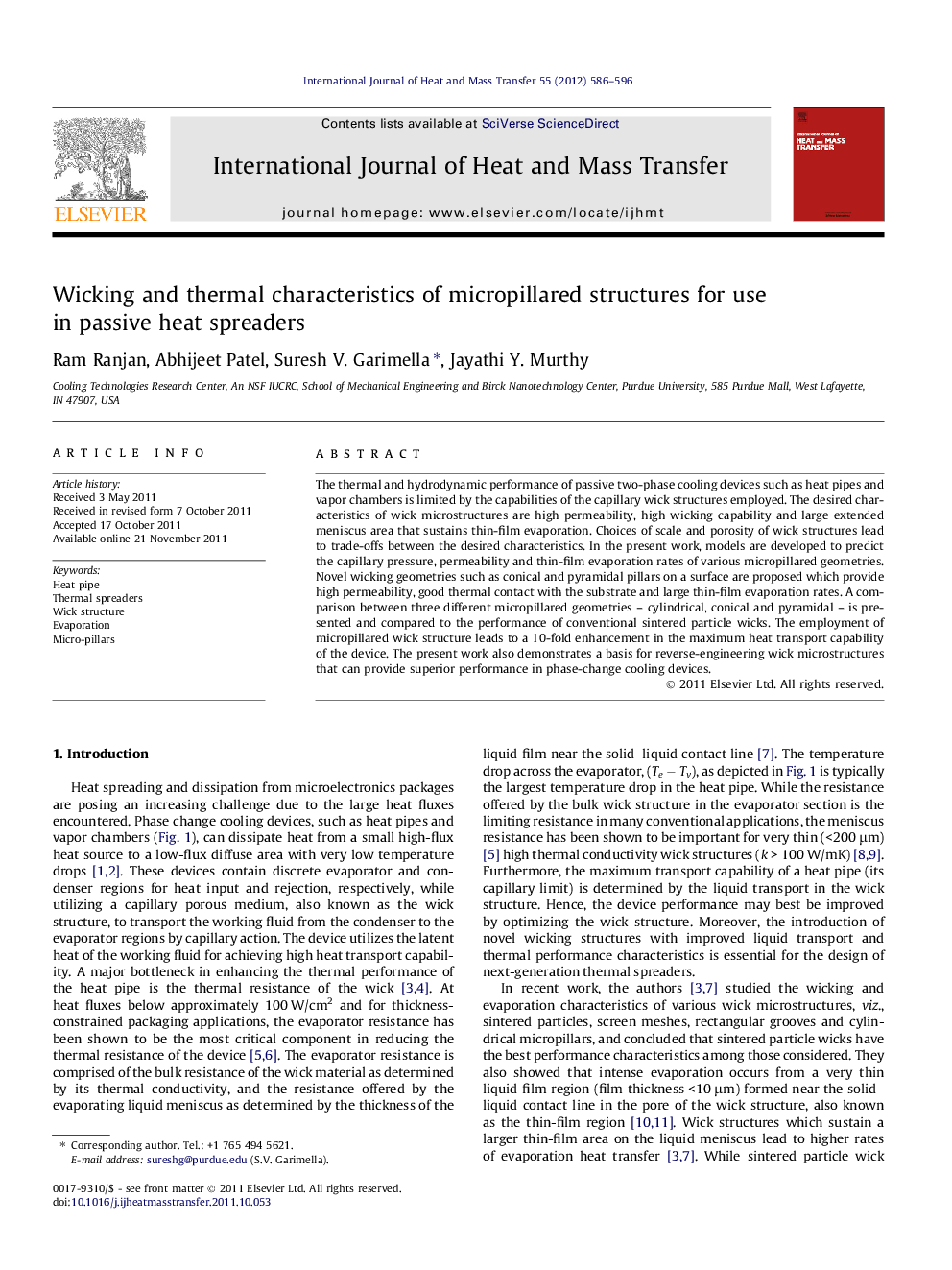| Article ID | Journal | Published Year | Pages | File Type |
|---|---|---|---|---|
| 658951 | International Journal of Heat and Mass Transfer | 2012 | 11 Pages |
Abstract
The thermal and hydrodynamic performance of passive two-phase cooling devices such as heat pipes and vapor chambers is limited by the capabilities of the capillary wick structures employed. The desired characteristics of wick microstructures are high permeability, high wicking capability and large extended meniscus area that sustains thin-film evaporation. Choices of scale and porosity of wick structures lead to trade-offs between the desired characteristics. In the present work, models are developed to predict the capillary pressure, permeability and thin-film evaporation rates of various micropillared geometries. Novel wicking geometries such as conical and pyramidal pillars on a surface are proposed which provide high permeability, good thermal contact with the substrate and large thin-film evaporation rates. A comparison between three different micropillared geometries - cylindrical, conical and pyramidal - is presented and compared to the performance of conventional sintered particle wicks. The employment of micropillared wick structure leads to a 10-fold enhancement in the maximum heat transport capability of the device. The present work also demonstrates a basis for reverse-engineering wick microstructures that can provide superior performance in phase-change cooling devices.
Related Topics
Physical Sciences and Engineering
Chemical Engineering
Fluid Flow and Transfer Processes
Authors
Ram Ranjan, Abhijeet Patel, Suresh V. Garimella, Jayathi Y. Murthy,
